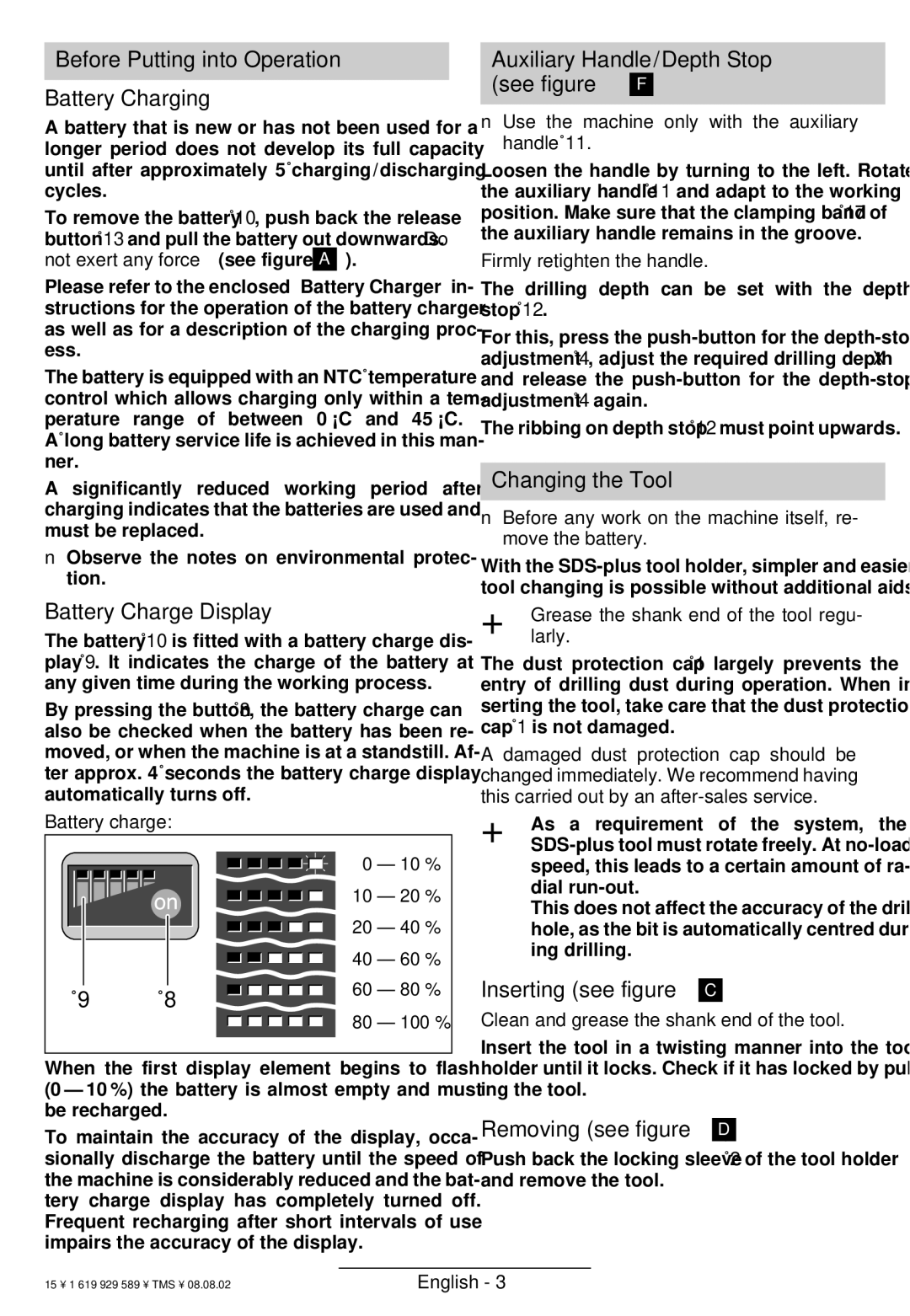GBH 24 VFR, GBH 24 VRE specifications
The Bosch Power Tools GBH 24 VRE and GBH 24 VFR are high-performance rotary hammers designed to meet the demands of both professional and DIY users. Offering advanced technology and innovative features, these tools are ideal for drilling and chiseling in a variety of materials, including concrete, brick, and masonry.One of the standout features of the GBH 24 VRE and GBH 24 VFR is their powerful motor, which delivers impressive impact energy ensuring efficient work rates. The GBH 24 VRE model boasts a hammering energy of 2.7 joules, while the GBH 24 VFR matches this with equally robust power. This level of impact energy is vital for penetrating tough materials, allowing users to accomplish more in less time.
Both models incorporate Bosch’s innovative SDS-plus chuck system, enabling quick and easy tool-free bit changes. This allows for seamless transitions between different applications, whether users are drilling or chiseling. The GBH 24 VRE features an electronic variable speed control, allowing users to adjust the speed and impact rate according to the application. This level of customization ensures precision and efficiency, whether working on delicate tasks or tackling tough materials.
Ergonomics are also a hallmark of these tools. The GBH 24 VRE and GBH 24 VFR come with a soft-grip handle and an auxiliary handle, enhancing control and reducing fatigue during prolonged use. The tools are designed to be lightweight, making them easy to maneuver while still being robust enough to handle demanding jobs.
In terms of durability, both models are built with high-quality materials and robust engineering, ensuring long-lasting performance even in challenging conditions. Additionally, the GBH 24 VFR incorporates advanced vibration reduction technology, minimizing user fatigue and making it more comfortable to operate over extended periods.
Overall, the Bosch Power Tools GBH 24 VRE and GBH 24 VFR are top-tier rotary hammers that combine power, versatility, and user-friendly features. With their advanced technology and robust construction, they are excellent choices for anyone looking to tackle heavy-duty tasks with ease and precision. Whether for professional or personal use, these tools are designed to deliver reliable performance, making them essential additions to any toolkit.

